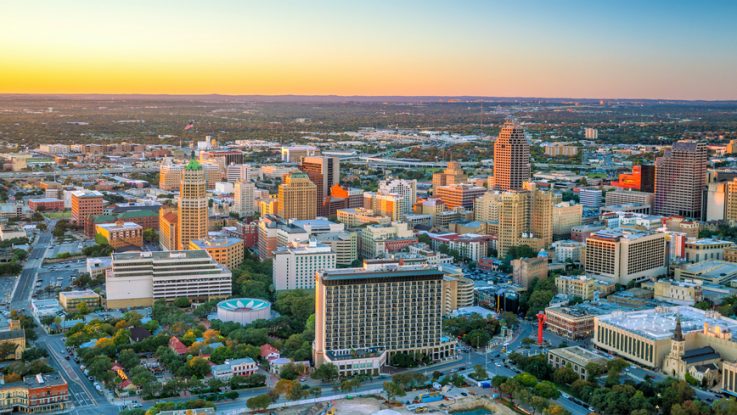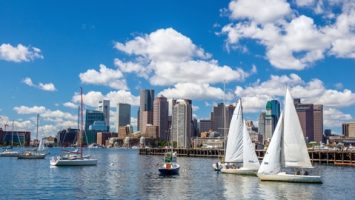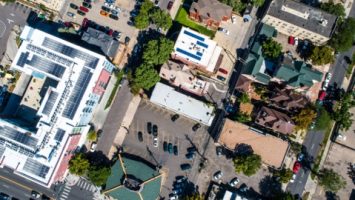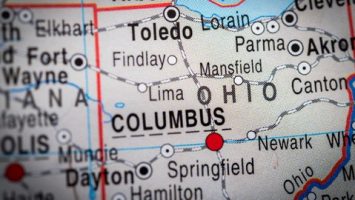
Emily Royall, Smart City Coordinator for the City of the San Antonio, spoke with Managing Editor Laura Benold about the city’s Smart 50 Award-winning project, 311SA, and what it means to be “smart”.
LB: Let’s start off with the basics. Can you tell me about the 311SA project itself?
ER: 311SA transforms how the public connects with each other and the City of San Antonio on municipal services in our community. The platform shapes a new generation of discussion and action to resolve daily challenges related to the maintenance and care of our urban fabric.
311SA is a radical departure from other 311 applications because it not only allows residents to flag and document issues, it also builds community around the resolution of those issues by allowing residents to propose new categories of problems, build a following through the social media environment, and track the issues their friends, neighbors and other residents share on a people-centric mobile interface. The application was built by a local technology company, CityFlag, and procured with the support of the city’s 311 department and the office of innovation.
LB: How is the city kept accountable for request submitted through the app, and what prevents residents from being digitally neglected or ignored?
ER: The mobile app requests are not treated any differently than those that are processed when residents call the 311 customer service office. The mobile app is fully integrated with the city’s customer relationship management (CRM) system which serves as the intake system for services requests. The mobile app requests get submitted through the CRM system which then sends the request to the department to get addressed. The mobile app requests are not treated differently than requests coming in from the 311 call center or through the city’s website.
LB: What themes have you noticed from engaged users? Are they demographically similar or different? Do they share common concerns?
ER: Since launch in August 2018, the focus has been mostly focused on responding to the issues identified by residents. Although we don’t collect personal information of users, we will be releasing aggregated 311 data to our entrepreneurial community to develop further insight and analysis through our CivTechSA initiative.
LB: You have a resolution rate of 93%. What falls in the remaining 7%?
ER: The remaining 7% are issues that are still open and under investigation. The remaining items aren’t necessarily different from the 93%. Because the app is integrated with our CRM system, the cases remain open until they are closed. The status of the app is real time.
LB: Was it simply the size of San Antonio at 1.5 million residents that prompted you to create this service, or was there something else that brought about your interest in reaching the community in this way?
ER: It’s true that San Antonio is a large, ever growing city. However, the spirit of this service is that we find innovative ways to connect to our public. 311SA is fun to use, it’s engaging, and it builds bridges between citizens and government.
LB: What do you think San Antonio is currently known for? What do you want the city to be known for?
ER: “Puro” San Antonio is known for its rich history and cultural diversity. We are a city built by the confluence of many people along an ancient water source, the dynamics of which continue to play out in how our city grows physically and culturally.
We want our city to be known for celebrating that diversity and complexity by protecting, nurturing, and maintaining our urban landscape and the quality of life for our residents. We want to be known for pioneering a “community-first” smart city strategy, always keeping in focus how people actually live in our city.
LB: How did you engage the community to the extent that they would adopt and use 311SA? What work are you still doing to educate the public?
ER: Our partner CityFlag helped get the word out about the application. At the official launch of 311SA, staff was on hand to train residents with how to use the application. The application is designed to be intuitive and user-friendly, which may have contributed to its wide popularity.
LB: What does it mean to you to win a Smart 50 Award?
ER: It’s a huge honor for our smart cities team, our office, our partners CityFlag, and the 311 department at the City of San Antonio. For us, it means that we are on the right track with our smart city strategy that focuses on how to work collaboratively with our local entrepreneurship ecosystem to innovate smart city technologies that actually meet the needs of our residents. We’re so excited to continue developing our strategy in this space.
LB: What’s next for the Department of Innovation in San Antonio?
ER: In 2019, with our SmartSA Partners (a consortium of local utilities and universities) we will launch our first round of RFPs in our three innovation zones — designated areas for prototyping smart city technologies. We will continue to evaluate the success of those prototypes hand-in-hand with our citizens, which will continue to rely on for feedback, ideas, and direction.
We will also be embarking on our third year of the CivTechSA program, that focuses on developing local technology talent by connecting entrepreneurs and students with city projects and challenges, in 2020. We will also be kickstarting the research and development arm of our office, that will support both internal and external process improvements. Finally, through our Metrolab partnership with local University of Texas at San Antonio (UTSA), we will focus on bringing to bear new research and solutions that bridge our city’s digital divide, among several other projects.


